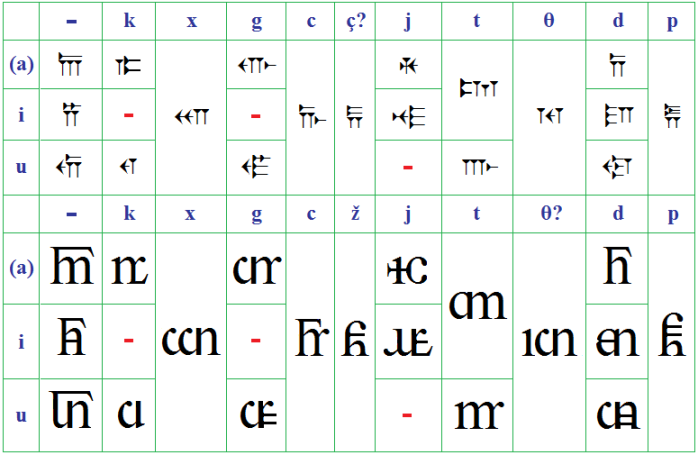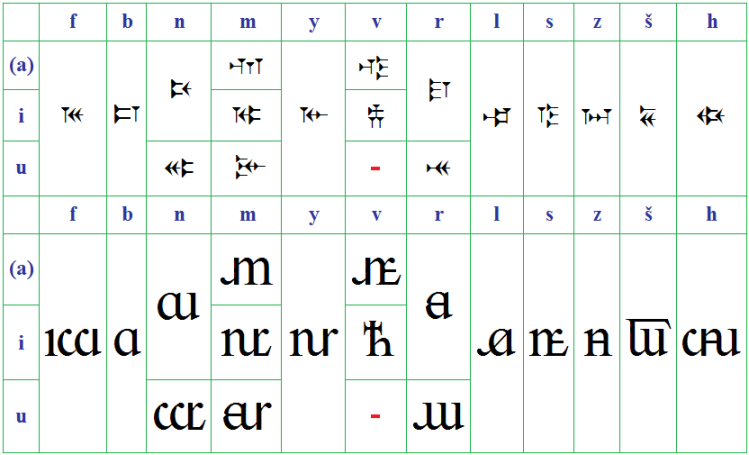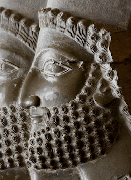This script came about after discussions with Ali Soleimani related to my earlier script for Persian called Bostani. Among other things, it was thought that the cuneiform of Old Persian might be adapted for use with Modern Persian. This experiment is not yet convincing for the latter, but might still be a useful alternative to the original. The name of the script is written as Xšayaršâi “of Xerxes”, after the Achaemenid king.
Derivation from Cuneiform
The original script was incised into stone in imitation of other scripts of the period, such as Akkadian. It was unusual in being almost an alphabet. For some consonants, a different letter is used depending on the next vowel.
The idea here was to imagine a stage in its development where it was transferred to papyrus, then a later stage again where a clear and distinct typeface could be produced. The script presented here is then the final stage. In the tables below, the top half shows the original cuneiform letters (already slightly stylized), and the bottom half shows a type-foundry stylization of them. The transliteration used here is not IPA, but a system commonly used in Iranian studies.


Sample text
This text is the first line of a poem by the famous poet Omar Khayyâm (the same poem I used to show off Bostani). The language in this case is Modern Persian.

Ruzist xuš va havâ na garmast va na sard ...

